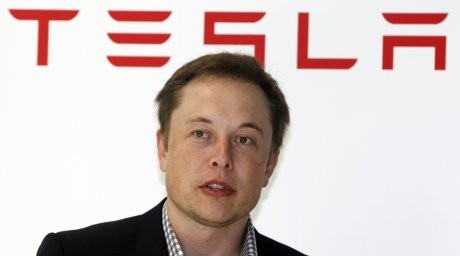Your Mileage May Vary: Journalists are the Least of Tesla's Problems
The problems Elon Musk and Tesla face are far greater than a journalist with a heavy right foot; the problem with the Model S is that we have the chicken before the egg - an electric car before the infrastructure to power it.

It's a modern, handsome four-door saloon car that can transport five adults in comfort and has a 360bhp motor that can launch the car to 60mph in 5.6 seconds and on to a top speed of 130mph. In other words, it's not that far removed from the Jaguars, BMWs and Mercedes of this world.
But whereas a similarly powerful (and priced) diesel Jaguar or German alternative can manage up to 700 miles of conservative driving before visiting one of more than 100,000 service stations in the US, the Tesla Model S can travel a claimed 300 miles and, even by the company's estimates, just 100 so-called Supercharger stations will be open across America by the end of 2013.
Add this to Tesla's plans of hoping to deliver 20,000 Model S cars this year, and the problem with infrastructure is obvious.
US roads already have a network of chargers for electric vehicles - just as you'll find dotted across some streets in central London - but these take a full night to charge the battery of a Model S, so are next to useless when you're away from the mains charger at home (which also takes a night).
Spotting the problem, Tesla developed and installed Superchargers along some US freeways, which can fully charge a Model S in around an hour - a huge improvement, although still not the five minutes a stop for regular fuel takes.
But why should Tesla be the one installing these chargers? Car manufacturers don't contribute to the building of petrol stations, or indeed any of the infrastructure needed to get oil out of the ground and into our fuel tanks, yet this is what Tesla is doing.
Worse still, is that these 100 Superchargers will not work with any other electric car. They are proprietary, just like Apple's Lightning cable only works with iOS products when almost everyone else uses microUSB.
And because Tesla chargers are so spread out across the US, driving further than a few dozen miles becomes a school lesson flashback of map reading, maths and orienteering to work out if that weekend trip across state you have planned is even possible.
A look at the competition
Having said that, small electric cars for use in city centres make perfect sense. Because you are only making short journeys the battery can be small, making the car smaller and cheaper to manufacture, but so far the most affordable electric car is the G-Whizz, a vehicle that is technically a quadracycle and therefore does not need to pass any of the stringent crash tests of regular cars.
The smallest electric vehicle recognised as a car is the Renault Zoe which costs £14,000, but that - bizarrely - doesn't include the £70 a month you have to pay to rent its 100-mile battery from Renault.
A step up is the Nissan Leaf, a small five-door hatchback aimed at the mid-market and priced at £24,000, but it only has a range of 100 miles and takes eight hours to charge, so you are still fairly restricted by range, and the price is far higher than an equivalent petrol car.
Above this we have the Tesla Model S, although it isn't yet available outside of the US, and it's doubtful that it will arrive anywhere else before Tesla or another company first lays the groundwork and installs a network of Superchargers.
Gamble on the future
Of course the problem then is the gamble a company will have to take to install the network of chargers, in the hope that adoption of larger electric cars like the Model S will be as popular as in the US.
And all this is before we address where the batteries come from (mining), where the electricity to charge them comes from (predominantly coal- and gas-fired power stations), and how often they need replacing (some estimates say every three years).
Alternatives to petrol and diesel are undeniably the future, and development in electric and hydrogen power has gone well so far, but don't forget we've been perfecting the internal combustion engine for over 100 years, and technologies like Ford's EcoBoost prove there is still room for development before an alternative becomes a necessity, not just a luxury.
© Copyright IBTimes 2024. All rights reserved.























